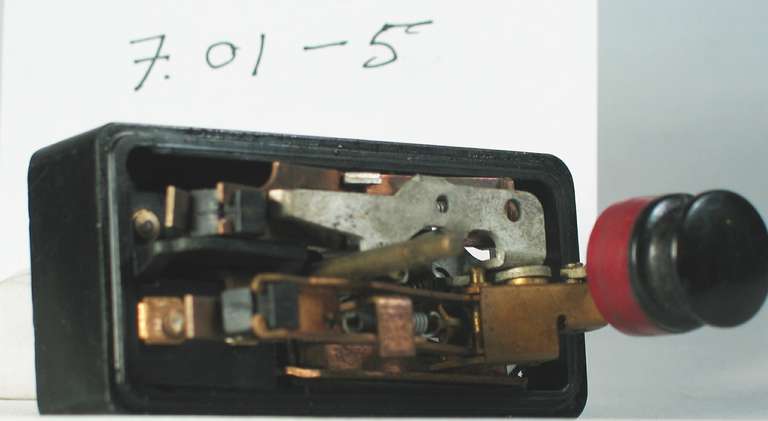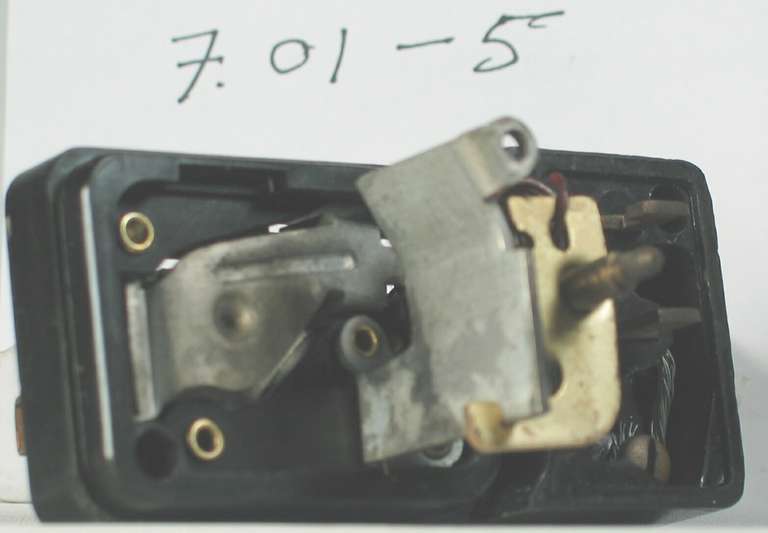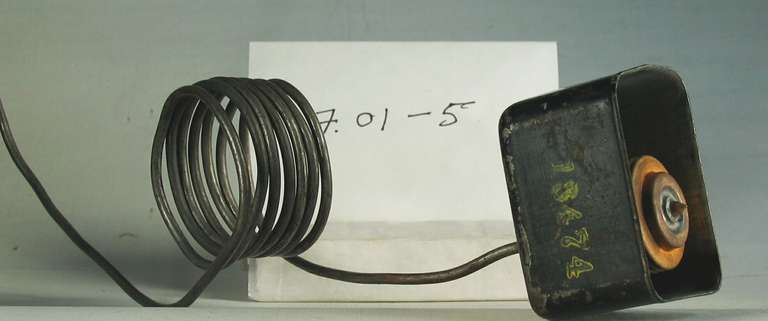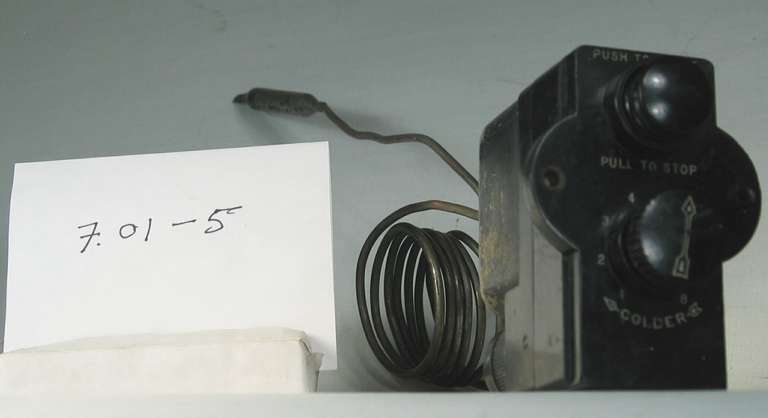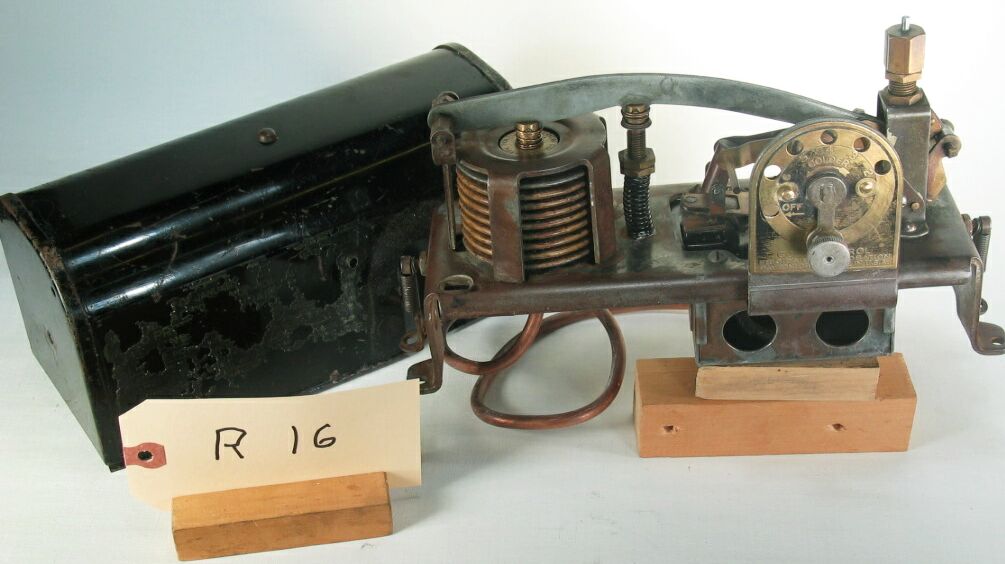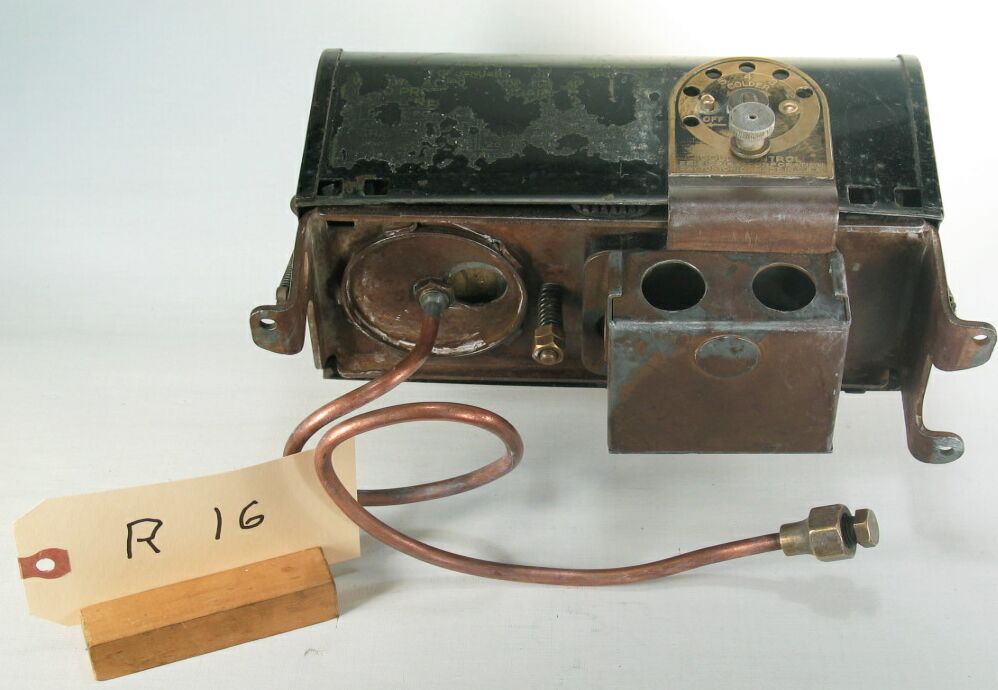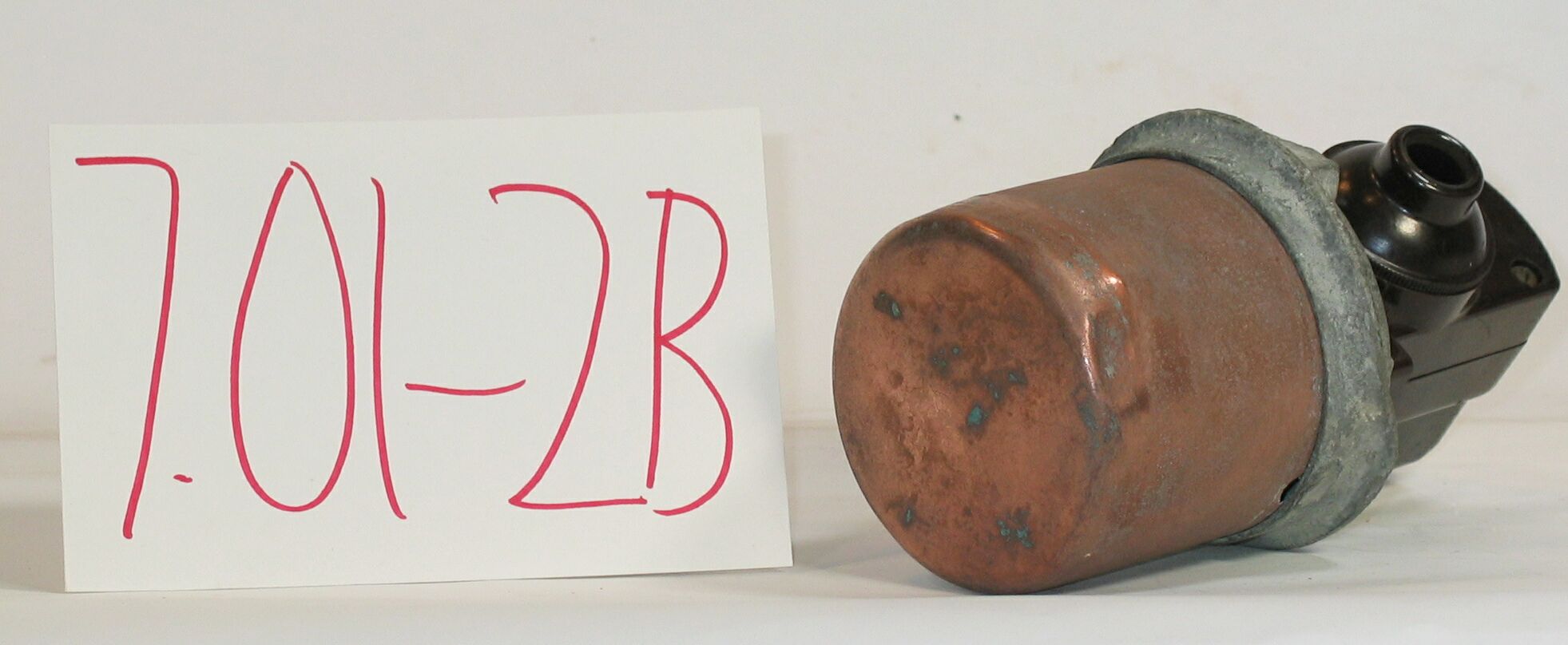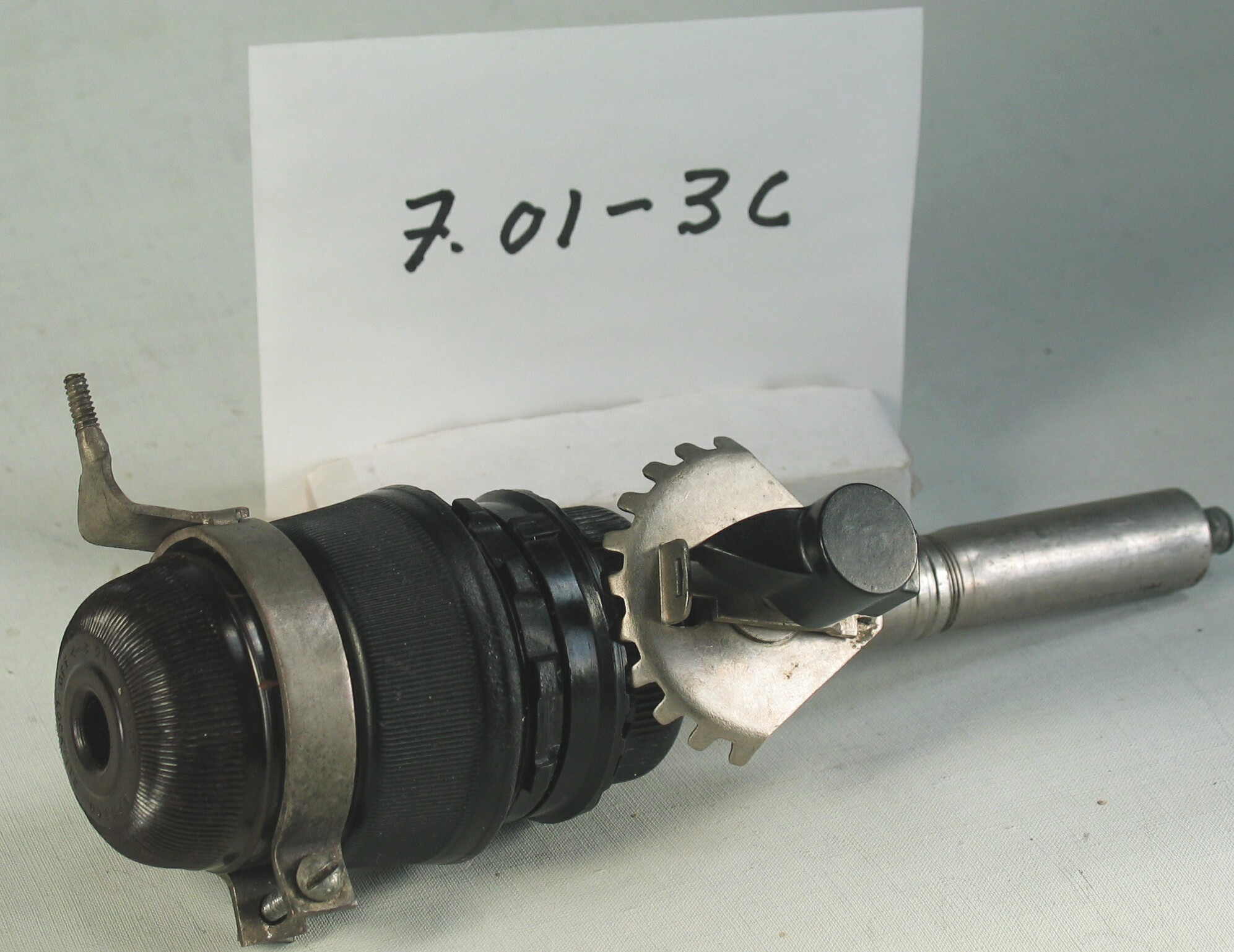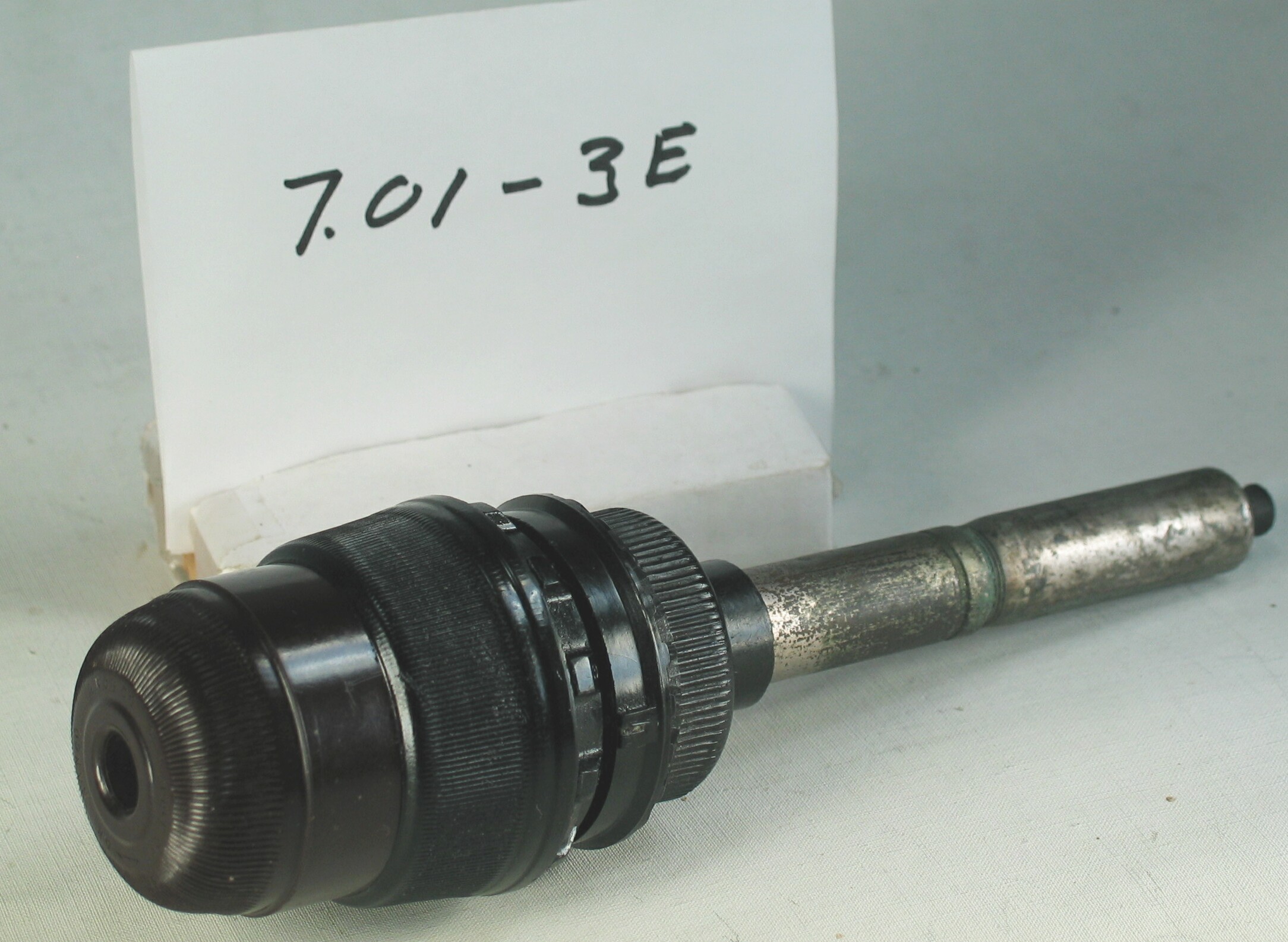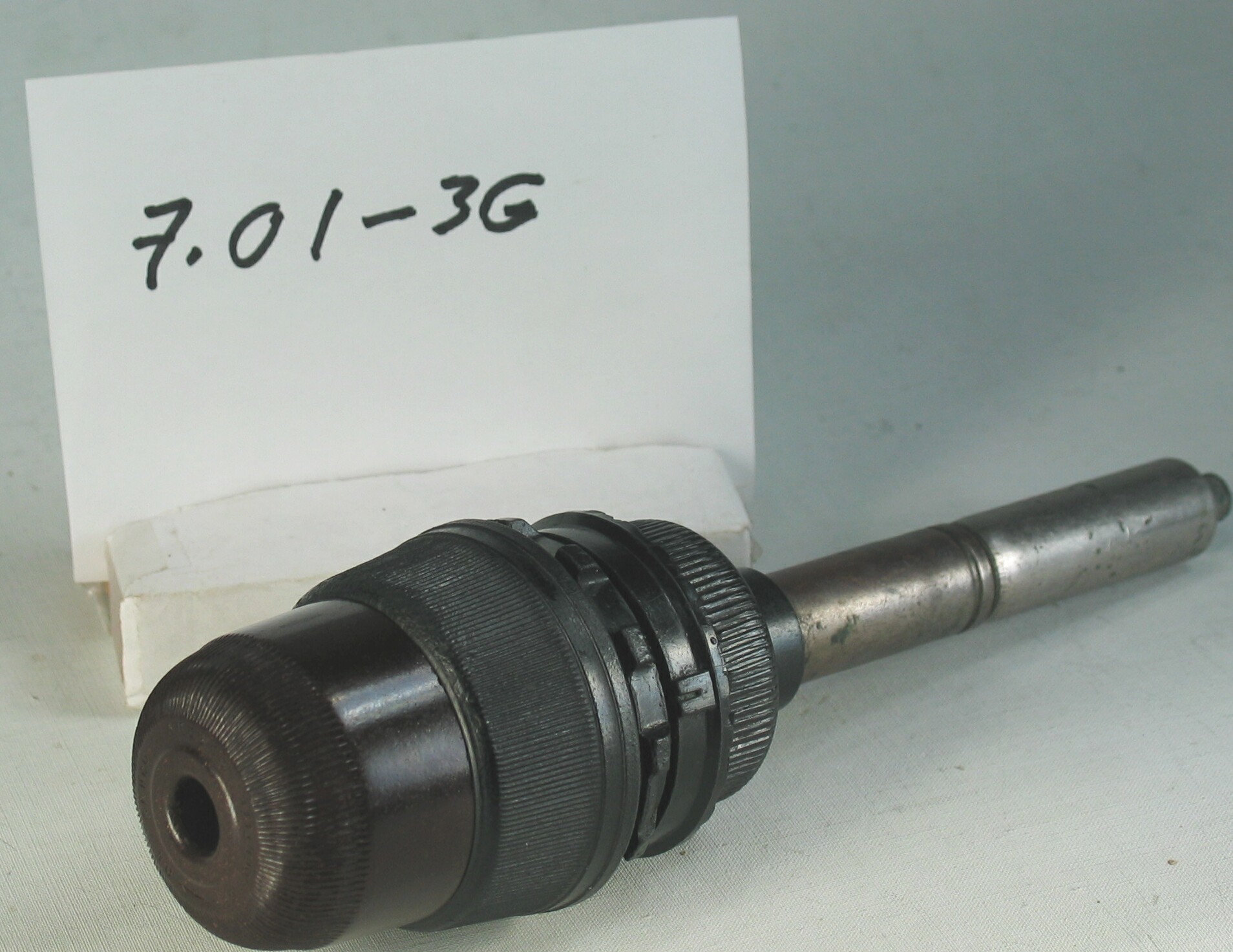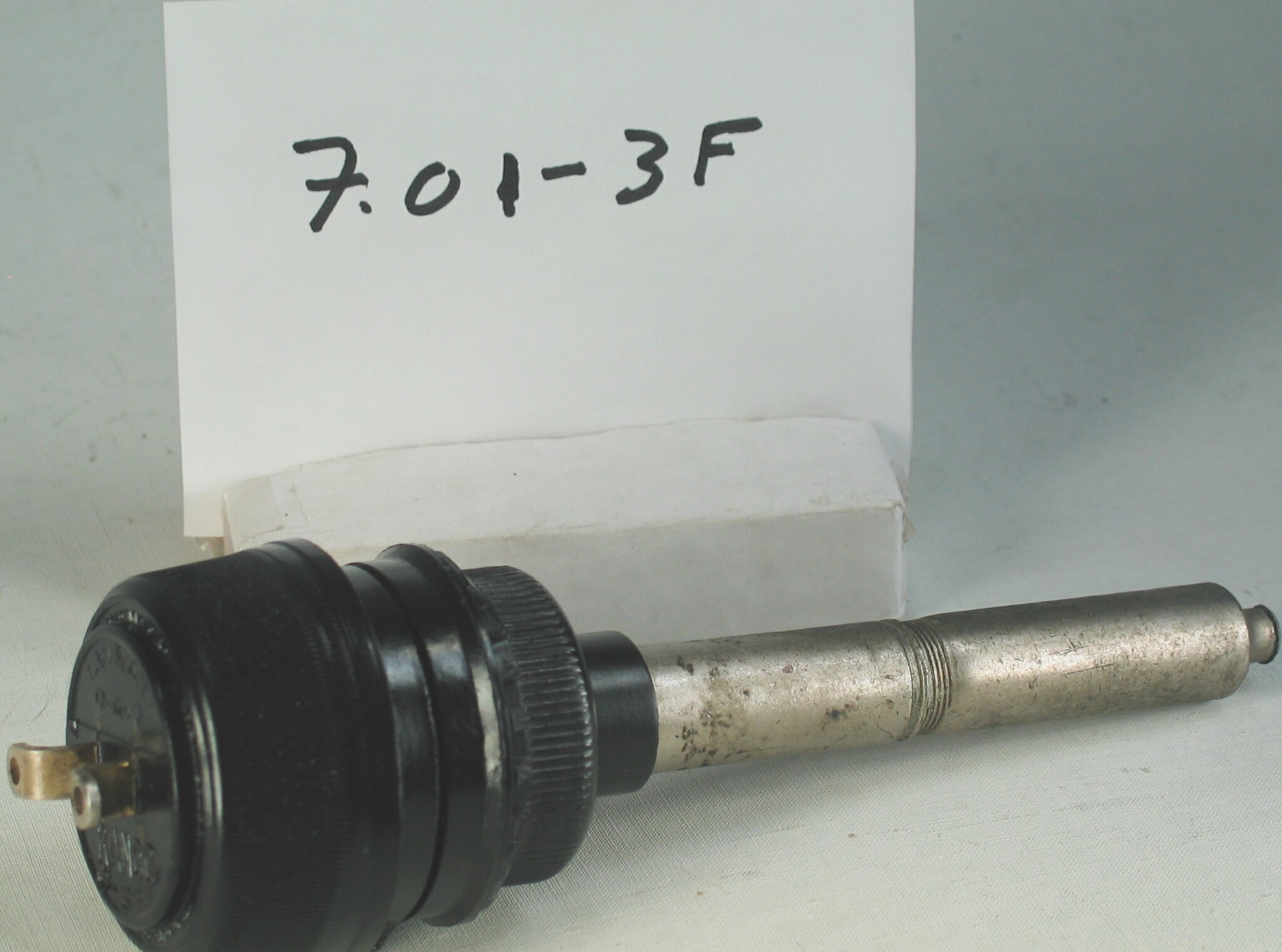7.01-5: Ranco 1935 Automatic Temperature Control
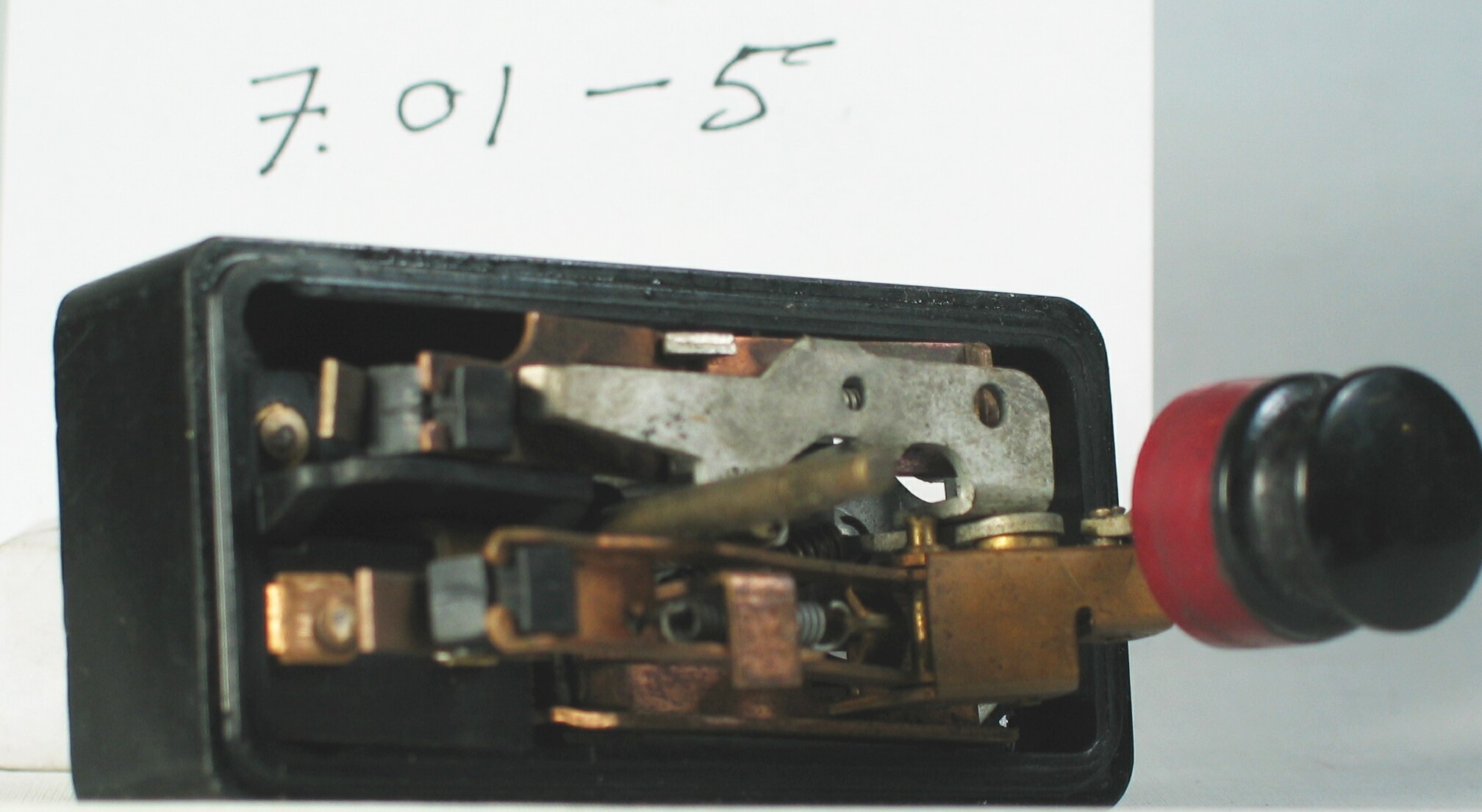
| HHCC Accession No. 2006.020 | HHCC Classification Code: 7.01-5 |
|---|
Description:
An hydraulic bellows actuated, automatic temperature controls, employing extended capillary tube sensing, equipped with compact totally enclosed bellows, long 42’, coiled capillary and bulb, enhanced by manual reset, electric motor overload protection, all enclosed in further compacted Bakelite case, Ranco, Type F, circa 1937.
One of a series of early, hydraulic bellows actuated, automatic temperature controls, employing extended capillary tube sensing ‘ the preferred sensing technology of the mid 20th century. [See items ID # 142- 151]. The genre would give way by the end of the century to electronic sensing methods.
Group:
7.01 Refrigerating and Air Conditioning Pressure and Temperature Controls - Household
Make:
Ranco
Manufacturer:
ARCB Co., Columbus Ohio
Model:
Type F
Serial No.:
Case marked with codes KC, RHR, and power element 18474
Size:
3 in. long plus capillary line x 1.5 x 3 in. high
Weight:
10 oz
Circa:
1935
Rating:
Exhibit, education, research, and demonstration quality illustrating a significant milestone in the evolution of extended capillary tube technology through a myriad engineering design developments and applications.
Patent Date/Number:
Provenance:
From York County (York Region) Ontario, once a rich agricultural hinterlands, attracting early settlement in the last years of the 18th century. Located on the north slopes of the Oak Ridges Moraine, within 20 miles of Toronto, the County would also attract early ex-urban development, to be come a wealthy market place for the emerging household and consumer technologies of the early and mid 20th century.
This artifact was discovered in the 1950’s in the used stock of T. H. Oliver, Refrigeration and Electric Sales and Service, Aurora, Ontario, an early worker in the field of agricultural, industrial and consumer technology.
Type and Design:
Extended capillary tube sensing Totally enclosed
Construction:
- All mechanical mechanism, spring loaded, driven by capillary tube action, beautifully engineered and crafted, a marvel of hand assembly, production line techniques of the period
- Beautifully formed case in high gloss black Bakelite, employing the advanced industial forming methods of the period
Compact bellows, totally enclosed with 42’ coiled capillary line and bulb,
Material:
Special Features:
Accessories:
Capacities:
Performance Characteristics:
Operation:
Control and Regulation:
Targeted Market Segment:
Consumer Acceptance:
Merchandising:
Market Price:
Technological Significance:
The series [see items ID # 142- 151] profiles the evolution of extended capillary tube technology through a myriad engineering design developments and applications. It was a period driven by, and responding to, a new often shameless, marketing hyperbola. For the industry would take full advantage of knowledge from the newly found thermal and fluid flow sciences of the times, as well as of the new materials technology and manufacturing methods of the immediate pre-W.W.II years.
The industry was clearly out to create ever-increasing consumer interest and expectations for a user friendly, fully automated, self-regulating, affordable, mechanically driven cabinet refrigerators for the Canadian home. It was ‘an automatic refrigerator in every kitchen’ following the marketing pattern set by the automobile industry for ‘an automobile in every garage’, that was the call of the captains of the household refrigeration industry. The perfection of a reliable, affordable, and user friendly, automatic temperature control was critical to the success of this business venture.
The Type F was a significant step in the compacting and progressive simplification of these immensely mechanical and essentially clumsy automatic control mechanisms
Industrial Significance:
see above
Socio-economic Significance:
see above
Socio-cultural Significance:
- see above
Donor:
G. Leslie Oliver, The T. H. Oliver HVACR Collection
HHCC Storage Location:
Tracking:
Bibliographic References:
Ranco Manual #1058, Sixth Edition, July 1947, P.102 [illustrates a variant of the F with lever type control handle]
